Fossils, e-bikes, sci-fi movies, teenage hoons, an abandoned mine, step-grandparents, a big Lotto win in a small kiwi town and one of the craziest roadtrips in a giant campervan you’ll ever read about – it’s all here in Des Hunt’s new book To Trap a Thief. Aaron Topp has a talk with him about his current and past career.
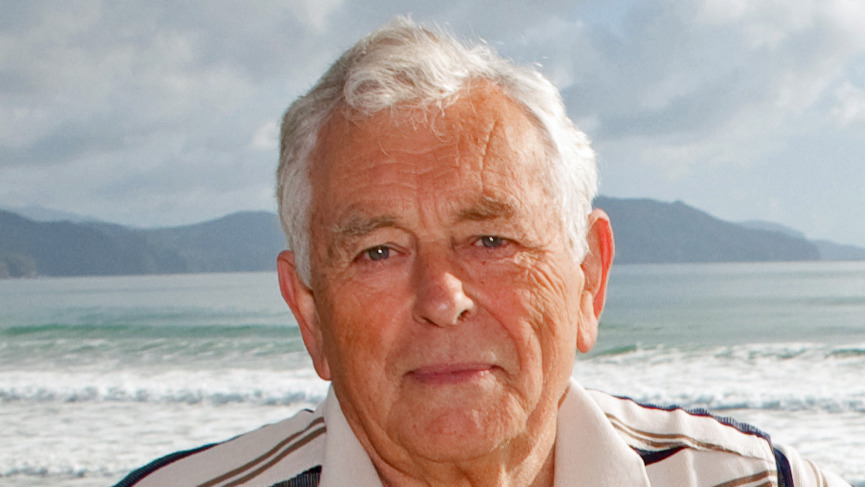
Fossils, e-bikes, sci-fi movies, teenage hoons, an abandoned mine, step-grandparents, a big Lotto win in a small kiwi town and one of the craziest roadtrips in a giant campervan you’ll ever read about – it’s all here in Des Hunt’s new book To Trap a Thief.
Early teen Conner is going through a tough time. He lost his father in an accident and now he’s coming to terms with his mum remarrying a local ‘air-force computer-nerd’. But change is not limited to one side and his step-fathers parents, Denzel and Rosen, are just as unsure about Connor and his mum. But Denzel is keen to make an effort, and he and Connor start to hang out more, starting with Connor showing him the BMX jumps in the local quarry.
It’s during one of these early bonding sessions a Lotto ticket and a local bogan, Joel, make an appearance, and an impression! This sets off a chain reaction of events that involves Connor and his mate Harvey heading to the Golden Bay region on a roadtrip with new lottery winners, step-grandparents Denzel and Rosen. Meanwhile Joel, who is convinced the winning ticket was his,has followed them down and has joined up with someone far more dangerous and manipulating, Frank Brown. From that point on, the holiday becomes a battle of wits between the tough duo and the tech-savvy lads hanging out with the retirees, reaching an ‘explosive’ climax in an old Golden Bay cement works at Tarakohe.
…the holiday becomes a battle of wits between the tough duo and the tech-savvy lads hanging out with the retirees, reaching an ‘explosive’ climax in an old Golden Bay cement works at Tarakohe.
There is also the prospect of a surprise interactive ‘quest’ that Conner and Harvey must solve each day that is based on the Recursive Code, the latest sci fi movie locations filmed in Golden Bay. Using the latest mobile phones and brand new e-bikes as their tools they must solve each riddle to claim the prize. But who is the mystery Harmonic-5 sending puzzles and is each daily quest really all that kosher at all, or is this just Frank and Joel trying to take Connor and Harvey out of the picture?
Des Hunt does a remarkable job of keeping a series of subplots intertwined and progressing, while also taking the reader through his own location tour of landmarks in the Tasman region. To Trap a Thief is a ripping read that would appeal highly to the tweenage boys. At over 300 pages, it’s a chunky book but the short chapters and fast pace of the story makes it an easily digestible one. Des Hunt once again shows why he’s a master of good storytelling.
I caught up with him to find out a bit more about the new book and life as a writer…
Aaron: Tell us about the moment that first sparked your idea for To Trap a Thief.
Des: In 2009, I was working on a sequel to my nonfiction title Naughty Kid’s Book of Nature, with the tentative title Naughty Kid’s Book of Life and Death. A chapter in this was about fossils, and as part of the research I took a trip to Tasman/Golden Bay where some of the oldest fossils in NZ are found; things like trilobites and graptolites. I’d never been over the Takaka Hill before so I did some sightseeing while I was there. That took me to Tarakohe and the Golden Bay cement factory where most of the cement used last century was made. I vividly remember driving around a corner, turning my eyes to the right and seeing these magnificent concrete ruins. I knew right then that this place had to be the climax of a story.
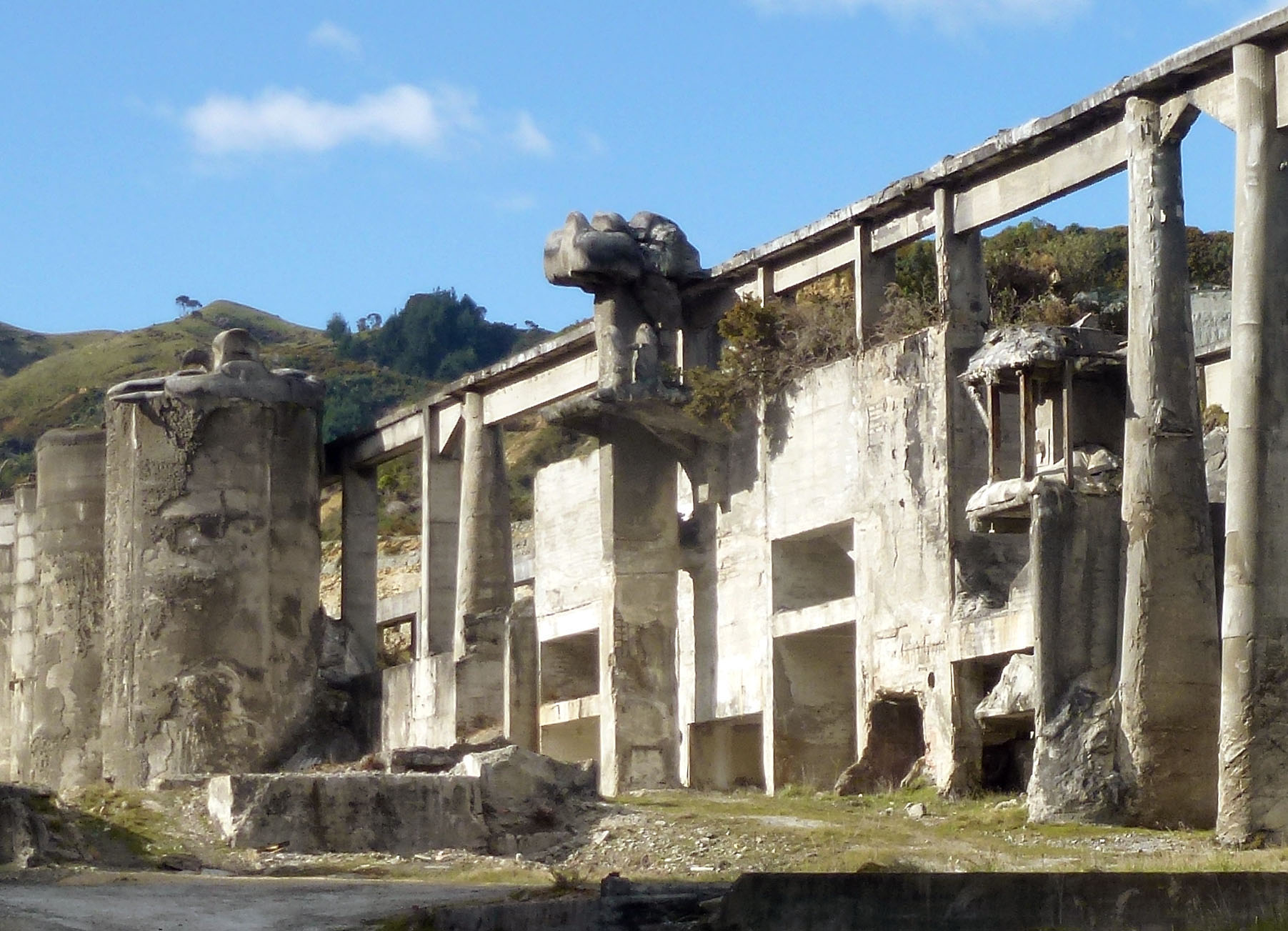
A: The reader gets the sense that you know the Tasman region very well with many landmark settings mentioned. How did you research the story? Did you do a roadtrip like the characters in the book first?
D: In 2012 I returned to the upper South Island, this time with my wife and daughter in a rental campervan. We stayed in roadside camping places and holiday camps just as my characters eventually did in the story. At that time The Hobbit was big news, so we spent time visiting Middle-Earth locations, thinking I might feature them in the story. One of these places was close to Wharariki Beach where I saw the Archway Islands for the first time. One of those became Stegosaur Rock in my story. After I wrote the first draft, we returned again in February 2013 to check out some of the places to make sure I had them right.
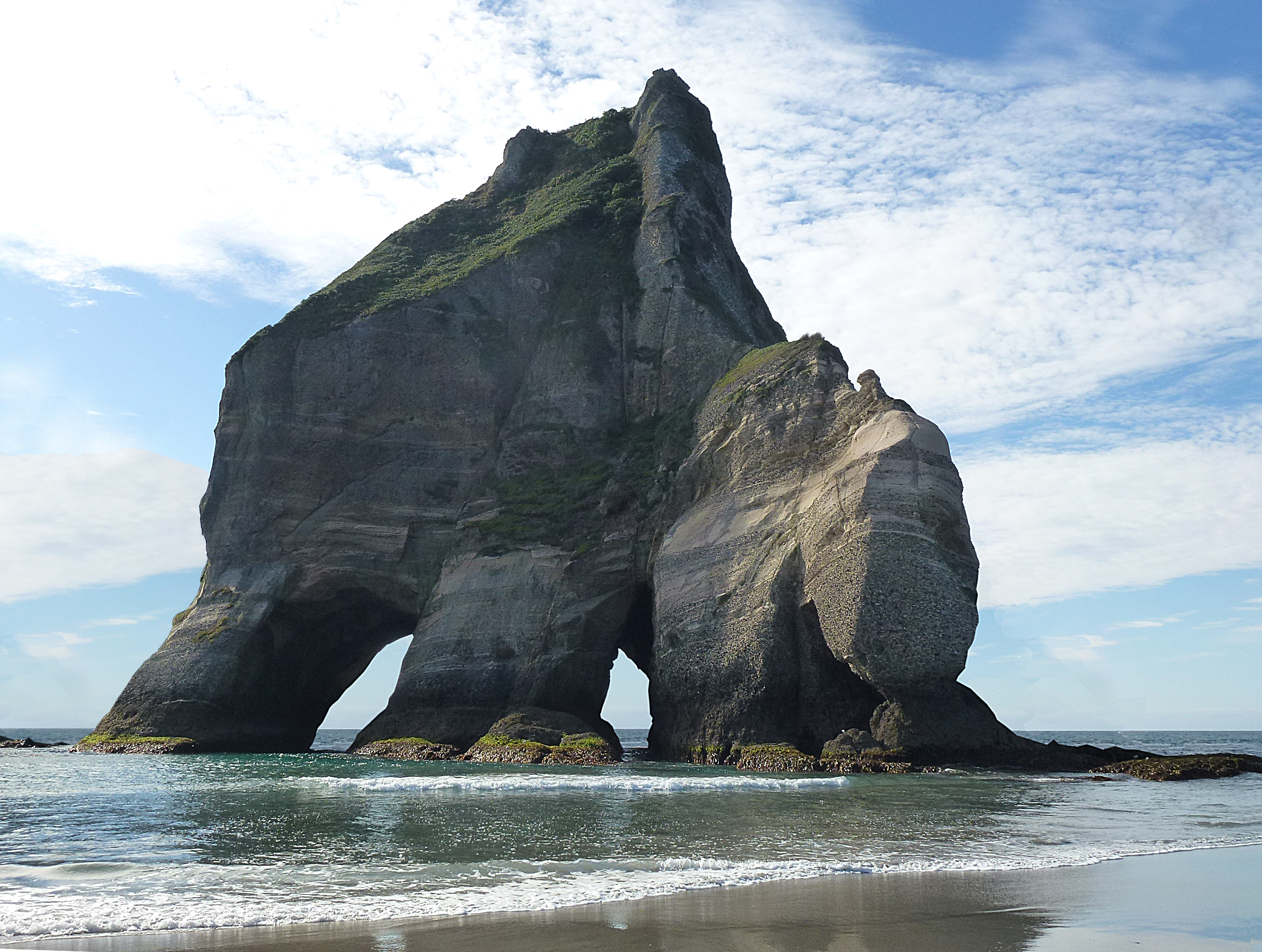
A: There is a lot of tech used in To Trap a Thief like apps, mobiles, e-bikes which gives the story a very modern feel – how else do you overcome the challenge to keep books relevant in a world where youth have more distractions than ever?
D: I’m a technophile and enjoy using technology in stories. That can be a problem, though, as rapidly changing technology can age a story very quickly. My approach is to use tech only when it can enhance the storytelling. I don’t intentionally use it to make the story more relevant to the reader. My previous story published by Scholastic – Sunken Forest – had almost no technology because of the wilderness setting. I hope that a good story will always be attractive to young people, despite the distractions of technology.
One thing I don’t do to make my stories appear more relevant, is use contemporary slang as that can go out of date within months, even weeks. In To Trap a Thief I wanted to have some slang, so I invented my own words based on the town of Bulls, the first location in the story. Those words cannot age.
A: In this day and age of social media how would you suggest parents get their children to pick up a book?
D: Start early. I believe that bedtime reading from a book can be the start of a lifetime of reading. This can begin even before the child can take in any detail of a story. As they get older they will invariably have favourite stories which are read over and over. Then when they move on to chapter books, they will experience the thrill of anticipation that comes from a good story. Eventually, they are likely to pick up a book and read it for themselves.
One of the surprising things that I discovered from my first novel – A Friend in Paradise – was that more youngsters have contact with my stories through listening than by reading. I believe that reading out loud to a child is one of the greatest gifts we can give them.
One of the surprising things that I discovered from my first novel – A Friend in Paradise – was that more youngsters have contact with my stories through listening than by reading.
A: You are one of the more well-known children’s writers in NZ. Do you still get nervous when you send that next new manuscript off?
D: Yes, every time. To Trap a Thief was first called Ruins of Tarakohe and was offered to a publisher in 2013. When they declined it, I sent it off to another major NZ publisher, with the same result. That first story featured the Hobbit trilogy of films, but by the time the two publishers had made up their minds the movies had been and gone, so I decided to do a rewrite. That’s when the Recursive Code theme was introduced, a move designed to avoid any further aging of the story.
This manuscript was offered to Scholastic in 2017 and accepted in 2018 for publication in 2019 – ten years after the first idea and six years after the completion of the story. I don’t enjoy waiting for publishers to make up their mind, nor do I like rejections, but I do use the time to think about a story, and will make changes between submissions. I tell myself that the process always leads to a better story.
This manuscript was offered to Scholastic in 2017 and accepted in 2018 for publication in 2019 – ten years after the first idea and six years after the completion of the story.
A: What would be three things you’d advise a writer who aspires to be published.
D: Be patient – I’d been writing fiction for more than ten years with a total of seven rejections when my first novel was published. Use rejections to take another look at your writing.
Always think of the reader while you are writing, asking questions such as, will the reader find this as fascinating as I do?
Be prepared to let a story sit on your computer maturing. If it is like a good wine you’ll find it has got better with time; if not then you’ll need to do something about that.
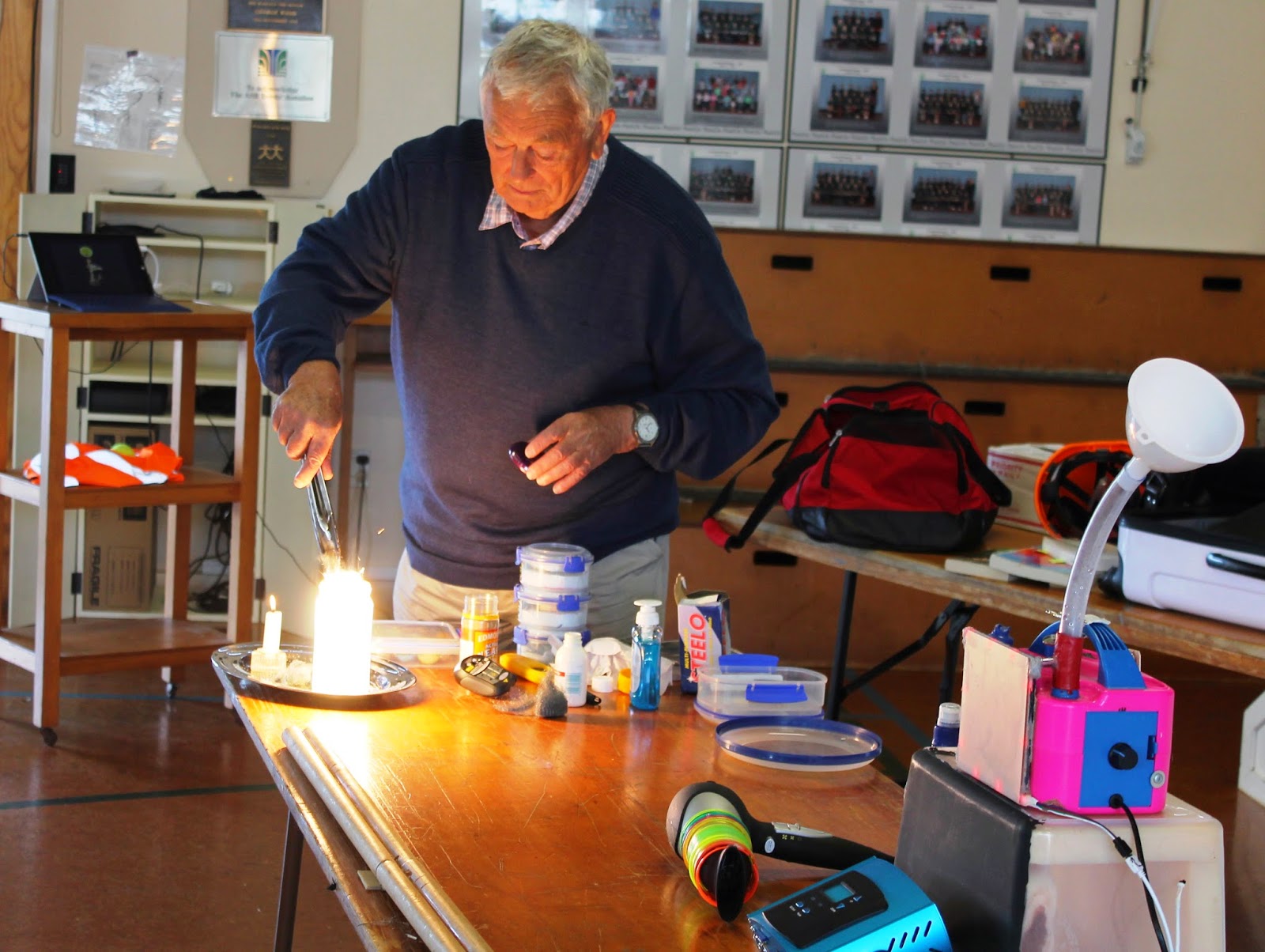
A: What does your ‘writing space’ in your home look like?
D: Because the room was once a kitchen, at 5 m x 2 m it is much longer than it is wide. One long wall is covered with bookcases; the other with cupboards. My library is mostly nonfiction and reference except for my own published novels which sit directly above my computer screen. I like them there for when I am having trouble with my writing: I can look up and see evidence that I overcame difficulties in the past, and this helps me keep going with the current project.
I am not a tidy person, so all flat surfaces are covered with a range of papers, books or devices. The only piece of hanging artwork is a print of a huia by Sophie Blokker. I do have some wall space for awards and achievements. Again, these are for the times when I’m feeling a bit down – they are not intended for others to see.
I am not a tidy person, so all flat surfaces are covered with a range of papers, books or devices. The only piece of hanging artwork is a print of a huia by Sophie Blokker.
A: What sort of routines or rituals do you have when you sit down to write?
D: No rituals, but some fairly fixed routines. Most of my first writing is done between 7am and 11am. Afternoons are for editing, proofing or research. I take breaks every 40 minutes or so. I am fanatical about backing up files so I have multiple copies at home, offsite and cloud.
A: Over the last ten years the publishing industry has gone through many changes and evolved itself. As a writer how have you adapted to this? And what new opportunities have been created for NZ writers?
D: Yes, I have been affected by these changes. I am no longer with HarperCollins who, in 2002, published my first novel, the one that started this journey. I think one of the difficulties in getting my stories published is that they are set in specific, real places in New Zealand, which makes them less attractive to a wider readership than if I used generic locations. I have considered non-specific settings, but decided to stick with my original intent which was to write ‘Kiwi stories for Kiwi Kids’.
Instead I made the move into self-publishing using the imprint Tōrea Press. This became affordable with the development of inkjet technology which allows for small runs at a reasonable price. I published Crown Park in 2010 after it was declined by a mainstream publisher. Since then I’ve moved to offset printing in China and have published another three titles, none of which were first offered to other publishers. They are all shorter stories and targeted towards the younger years of junior fiction.
Instead I made the move into self-publishing using the imprint Tōrea Press. This became affordable with the developmentof inkjet technology which allows for small runs at areasonable price.
A: What’s next for you?
D: I have currently got a novel called Red Edge being considered for publication. This is set in Christchurch and Kaikoura, featuring a group of youngsters who were four at the time of the Canterbury earthquakes. Each of them has some strange behaviour that can be traced back to the events of 2010 and 2011. For the first time in my writing I have created a girl main character, with a boy in the supporting role. Together they uncover a smuggling ring involving threatened wētā being used in alternative medicines. Through their adventures the pair gain strength that helps them move on from the trauma of their childhood. I’m hoping this will be published in 2020.
A shorter novel, presently titled Gaunt Creek, is finished and maturing on my computer. As a sequel to Crown Park, my first self-published novel, it also features travel back in time to look at a geological event that is likely to happen again – this one is the fracture of the Alpine Fault. I’m planning to release it through Tōrea Press in 2020.
My current writing is a Taranaki story with themes around intensive dairy farming, conservation, and problems experienced by foster children. This will be a full-length novel that I will offer to a mainstream publisher towards the end of the year.
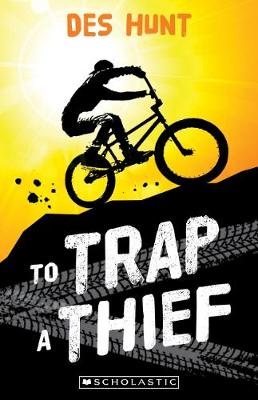

Aaron Topp
Aaron Topp is a teacher and a writer. His first book Single Fin(Random, 2006) is a coming-of-age story about a boy obsessed with surfing. Based on a true story, Single Finwon an Honour Award in the Young Adult Fiction Category of the New Zealand Post Book Awards for Children and Young Adults 2007. His second book, Creating Waves, is a series of mini-biographies of famous creative New Zealanders who surf. His most recent publication is Hucking Cody: A Tale of Betrayal, Jealousy, Brotherly Love and Freeriding.



